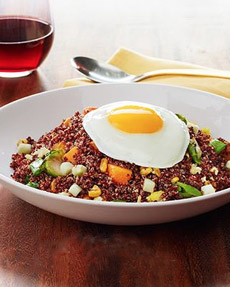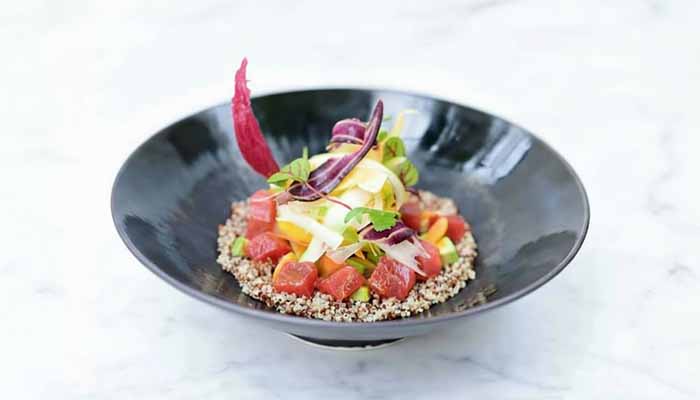A Great Whole Grain: Quinoa Recipes For National Quinoa Day
|
National Quinoa Day is January 16th, celebrating a whole grain* that came to prominence in the U.S. about a decade ago. Yet, many people have never tried it. Those who have are nutrition-oriented, excited that quinoa (pronounced KEEN-wa or KEE-noo-ah) contains more high-quality protein than any other grain. In fact, it’s a complete protein: It contains all nine essential amino acids†. It’s equivalent to milk as a protein source. It’s also high in fiber, and is a good source of calcium, iron, magnesium, phosphorus, vitamins A, B and E, and zinc. Cooked quinoa has nutty-earthy tones and is extremely versatile: It can be used in the place of almost any other grain, including rice, to make everything from appetizers to desserts. Quinoa (Chenopodium quinoa) is the Quechua (Inca) word for “mother grain” or “super grain.” A broad-leafed, annual herb, quinoa grows wild in the Andes Mountains of South America; it was first cultivated more than 5,000 years ago by the Incas and was, along with corn and potatoes, the foundation of the Andean diet. The sad part of the story is that since quinoa became a sensation on the world stage, many of the poor farmers who grow it can no longer afford to eat it. > The history of quinoa and more about this superfood. > The year’s 35+ grain holidays. > Check out the recipes below. Quinoa seeds range in color from red, orange, and yellow to black or white. The tiny seeds are the principal crop. Before consuming, quinoa seeds must be processed to remove their bitter coating of saponin. After washing or dry polishing, the ready-to-cook seeds are white, red, or beige in color. The spinach-like leaves, which unfortunately seldom reach the consumer, may be eaten raw in salads or cooked like spinach. Cooked quinoa is delicious and extremely versatile; it may be used in the place of almost any other grain, including rice, to make everything from appetizers to desserts (make quinoa pudding instead of rice pudding). It has a slightly nutty flavor (red quinoa is the nuttiest), which makes it a good substitute for couscous or bulgur. Quinoa has a unique texture as well. When cooked, the thin germ circlet falls from the seed and remains crunchy, while the pearly grain melts in the mouth. If you don’t want to cook up a pot-ful, you can find heat-and-eat, microwavable quinoa from companies like Ancient Harvest, Earthly Choice, and Seeds Of Change. |
|
|
|
________________ *Although technically a seed, quinoa is classified as a whole grain. †Amino acids are organic compounds composed of nitrogen, carbon, hydrogen, and oxygen, along with a variable side chain group. The body needs 20 different amino acids to grow and function properly. Though all 20 of these are important for your health, only nine amino acids are classified as essential. Lysine is an essential amino acid, along with histidine, isoleucine, leucine, lysine, methionine, phenylalanine, threonine, tryptophan and valine. Unlike nonessential amino acids, essential amino acids can’t be made by the body and must be obtained through your diet. Here’s more about each essential amino acid and what it does in the body. Nonessential amino acids are produced by the body, and are not contingent upon the foods we eat. Nonessential amino acids include: alanine, arginine, asparagine, aspartic acid, cysteine, glutamic acid, glutamine, glycine, proline, serine, and tyrosine. CHECK OUT WHAT’S HAPPENING ON OUR HOME PAGE, THENIBBLE.COM.
|
||






